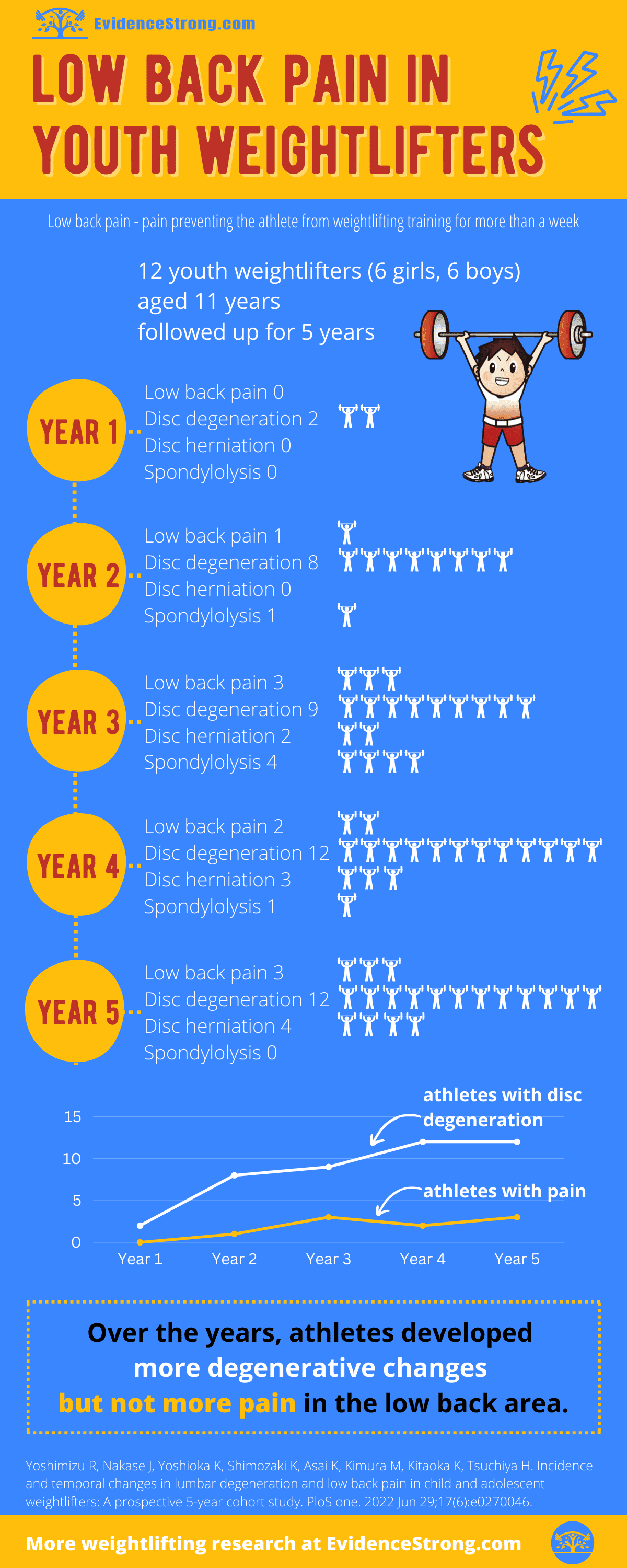Summary of a study looking at the changes in low back pain degeneration and low back pain in youth Olympic weightlifters.
Who
12 Olympic weightlifting athletes (females 6, males 6) aged 11.4 ± 2.0 years and 2.2 ± 0.7 years of competition history at the start of the study (Japan).
Design
5-year-follow up (MRI and low back pain presence).
Outcome measures
- yearly medical check-up
- presence of low back pain (LBP)
- MRI of low back pain (lumbar vertebrae)
low back pain (LBP) – athlete was unable to practice weightlifting for more than a week due to pain
Main results
Athletes trained on average 2 hours per day, 5 days a week. Athletes mostly trained at 50% of 1RM, training with 100% of 1RM was limited to once per week at most.
11 out of 12 athletes did other sports (swimming, sumo, trampoline, judo, basketball) before starting weightlifting, and 2 athletes started a new sport (sumo, track and field) while training weightlifting.
At the start of the study, no athlete had back pain, spondylolysis, or disc herniation. Two athletes had grade II disc degeneration.
By year 5, 12 athletes had disc degeneration, 4 had disc herniation (1 athlete underwent surgery/herniotomy), 0 spondylolysis, and 3 had low back pain.
All athletes developed degenerative changes in the low back over the 5 years of the study, but not all of them had pain.
disc degeneration – anatomical changes and loss of function in the disc
disc herniation – a disc bulge that goes into the spinal canal
spondylolysis – a fracture through a part of the lumbar (low back) vertebrae
Take home message
Original article
Yoshimizu R, Nakase J, Yoshioka K, Shimozaki K, Asai K, Kimura M, Kitaoka K, Tsuchiya H. Incidence and temporal changes in lumbar degeneration and low back pain in child and adolescent weightlifters: A prospective 5-year cohort study. PloS one. 2022 Jun 29;17(6):e0270046.
You might want to read next
How Olympic weigthlifters develop from the age of 9 to the age of 17
How Olympic weightlifting performance changes in female athletes over 10 years?
